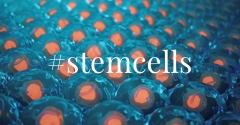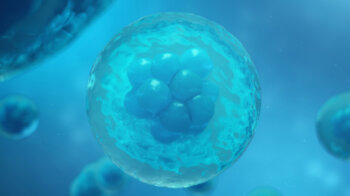NeuroCELLNESS® and NeuroCELLNESS-Combi® are a treatment program for demyelinating diseases, including cell therapy and various types of its administration, neuroprotection for myelin restoration.
Demyelinating diseases are serious chronic disorders of the nervous system that occur as a result of the destruction of the myelin sheath of nerve fibers. Myelin provides insulation of axons and the speed of nerve impulses, so its damage leads to impaired motor skills, sensitivity, vision, cognitive functions and even vital processes.
Demyelination occurs as a result of autoimmune inflammation, infectious agents, or genetic disorders affecting the central or peripheral nervous system.
There is currently no complete cure that can defeat the disease and restore lost functions, but cell therapy can help improve the patient’s condition and reduce symptoms. NeuroCELLNESS® and NeuroCELLNESS-Combi® are treatment programs for demyelinating diseases that include various types of mesenchymal stem cell administration and neuroprotection to restore myelin.
What are demyelinating diseases and what are they?
Demyelinating diseases are serious chronic disorders of the nervous system that occur as a result of the destruction of the myelin sheath of nerve fibers. Myelin is a substance that covers nerve fibers, helping to quickly transmit nerve impulses, so its damage leads to impaired motor skills, sensitivity, vision, cognitive functions and even vital processes. The list of demyelinating diseases includes:
- multiple sclerosis (MS) – a chronic autoimmune disease of the CNS, leading to multifocal lesions of the brain and spinal cord;
- chronic inflammatory demyelinating polyneuropathy (CIDP) – progressive damage to peripheral nerves;
- acute demyelinating polyneuropathy (Guillain-Barré syndrome) – an acute autoimmune process with a risk of paralysis;
- leukoencephalopathy – damage to the white matter of the brain of various origins with various symptoms;
- post-infectious demyelination – after viral or bacterial infections;
- Devic’s disease (optic myelitis) – an autoimmune lesion of the central nervous system, affecting the spinal cord and optic nerve.
This also includes encephalomyelitis (infection of the brain and spinal cord) of various genesis.
Causes, symptoms and risk factors of demyelinating diseases
Demyelinating diseases of the nervous system can be classified by causes. In particular, they occur due to genetic predisposition, autoimmune process, intoxication or viral agents. The latter include TORCH viruses (toxoplasmosis, rubella, cytomegalovirus and herpes), Epstein-Barr virus, HIV and others. If a blood test for immunoglobulins has shown the presence of appropriate antibodies, then patients with demyelinating diseases must be treated by an infectious disease specialist. Symptoms of acute demyelinating diseases are as follows:
- weakness in the limbs, gait disturbance, coordination;
- numbness, tingling, loss of sensitivity;
- visual impairment (blurry, double vision, loss of sharpness);
- pain in the back, limbs, muscles;
- tremor, muscle spasms, cramps;
- problems with urination and bowel function (incontinence);
- memory impairment, concentration, depression.
Since each area of the brain has its own functions, it is extremely difficult to identify common symptoms for many diseases. For example, a lesion in the area of the brain responsible for language may manifest itself in excessively clear pronunciation, indistinct pronunciation, the use of incorrect speech structures, forgetting words, etc.
Indications for cell therapy in demyelinating diseases
Cell therapy is indicated for CNS diseases that have an autoimmune, viral or undetermined nature. After examination, diagnosis and preparation, the patient can begin the procedures.
Advantages of cell therapy in demyelinating diseases
Cell therapy in demyelinating diseases and CNS disorders not only reduces the manifestations of the disease and slows down its progression, but also has a comprehensive effect on the root cause and recovery. Before the introduction of MSCs, individual preparation is carried out, including plasmapheresis procedures. As a result of cell therapy at the VIRTUS Institute, mobility, confidence and independence are returned to the patient. Thus, the risk of disability is reduced and the patient’s quality of life is improved, as far as possible in his condition.
The principle of action of cell therapy in demyelinating diseases
If conservative therapy is a symptomatic treatment aimed at reducing the manifestations of demyelinating diseases, then cell therapy is aimed at working with their causes and mechanism of action. So, the principles of action of MSCs in demyelinating diseases include:
- immunomodulation – suppress the aggressive immune response that destroys myelin;
- stimulation of remyelination – secrete growth factors that stimulate oligodendrocytes to restore the myelin sheath;
- neuroprotection – protect neurons from apoptosis, restore the structure of axons;
- improvement of microcirculation of nervous tissues – improve the supply of oxygen and nutrients;
- reduction of inflammation and edema of nervous structures, relief of symptoms.
Having understood the principles of action of MSCs, it is time to pay attention to preparation for cell therapy.
Results of cell therapy in demyelinating diseases
MSCs create new opportunities for the regeneration of damaged myelin. The results of cell therapy in demyelinating diseases are:
- improved motor skills, reduced weakness and stiffness;
- restoration of sensitivity, reduced numbness;
- improved vision and coordination;
- reduced muscle pain, cramps;
- improved cognitive functions, mood, memory.
In general, the frequency of exacerbations decreases, and the disease stabilizes. This leads to greater independence of a person with a demyelinating disease in everyday life.






















